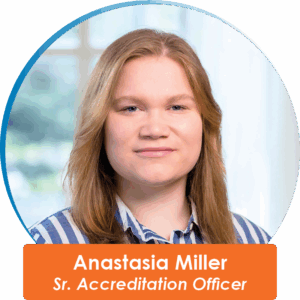 In August of 2018, the International Organization for Standardization (ISO) released the first standard specific to biobanks, ISO 20387. Because medical laboratories and biobanks have many functions in common, there are areas of overlap between this standard and ISO 15189:2022 for medical laboratories, as well as some important differences that pertain to each type of facility.
In August of 2018, the International Organization for Standardization (ISO) released the first standard specific to biobanks, ISO 20387. Because medical laboratories and biobanks have many functions in common, there are areas of overlap between this standard and ISO 15189:2022 for medical laboratories, as well as some important differences that pertain to each type of facility.
ISO 20387 for biobanking focuses on the storage or banking of biological material with provisions for collection, acquisition, preparation, preservation, and distribution of all types of samples. ISO 15189, on the other hand, is specific to human samples; it also covers the sample collection process but includes more information on examination and result reporting.
For medical laboratories that have internal biobanks, the standards dovetail together to create a much more comprehensive process for all potential stages of sample handling, but each standard also serves independently for facilities with one dedicated function.
How are ISO 20387 and ISO 15189 similar?
Both standards cover impartiality, confidentiality, and ethics in a very similar way. Both also address competency of personnel and appropriate competency testing.
Each standard contains specifics about management and organizational structure, but ISO 15189 goes into more detail about leadership functions and organizational requirements.
Although each standard addresses them, there are a few differences in the specifics about quality control measures, validation and verification of methods, audit procedures, and the handling of complaints, as well as things like the appropriateness of the facility and equipment. These areas of overlap are important to create consistency between standalone laboratories and biobanks.
For facilities that serve both functions, fulfilling the requirements of ISO 15189 fulfills many requirements of ISO 20387 and vice versa, making accreditation to both standards at once a more efficient, less costly process than assessing for each individually—and provides your organization with comprehensive, globally-recognized credentials to build your customers’ confidence.
How are ISO 20387 and ISO 15189 different?
The key differences between ISO 20387 and ISO 15189 lie in the handling and intended purpose of the samples. Biobanks are intended to keep samples significantly longer than a typical medical lab, so ISO 20387 addresses the preparation and long-term preservation of material, requirements for long-term sample traceability, and includes more specifics about the lifecycle of samples and how they are stored. Within sections 7.1 through 7.7, the standard dives into each aspect of the sample’s life within the biobank. Specifically, the focus is on keeping the sample for a long period or an undetermined amount of time while maintaining its integrity.
Because it includes provisions for human and non-human samples, ISO 20387 has more detailed requirements for the acquisition or collection and documentation procedures for all materials and requires that the intended use of samples be documented. Also, ISO 20387 differs in how it provides for transport or transfer of banked materials.
While testing is a part of biobanks, ISO 20387 does not cover in any significant detail the examination of samples and reporting of results of those examinations; those functions are comprehensively covered in ISO 15189. In addition, ISO 15189 contains details about examination procedures, verifications of results, measurement uncertainty, interlaboratory comparisons, and other functions related to ensuring the reliability of test results.
While ISO 20387 details the life cycle of the samples, ISO 15189 outlines how the sample is just prioritized during the duration of the testing. Because medical laboratories report these results to other facilities or individuals, there are also requirements about reporting that ISO 20387 does not address.
Both standards contain nuanced provisions specific to each type of facility. This is not an exhaustive explanation of either standard but is an overview of significant similarities and differences. ISO 20387 was developed in response to major biobank failures in the last several years and addresses biobank-specific requirements and procedures that other standards do not cover. Because many different types of facilities now contain biobanks, ISO 20387 can be implemented in a variety of organizations and can complement other ISO standards. This creates a more comprehensive system that helps to minimize risk, optimize efficiency, and ensure that ideal results are consistently achievable.
Want more information about ISO 20387 or ISO 15189? Reach out to A2LA at info@A2LA.org, or give us a call at 301.644.3248. Ready to take the next step in improving your organization? Request an estimate today.
